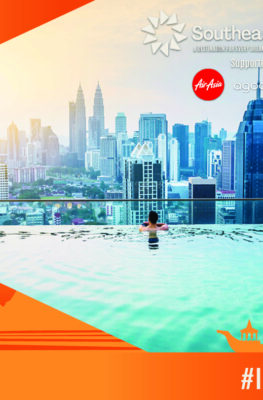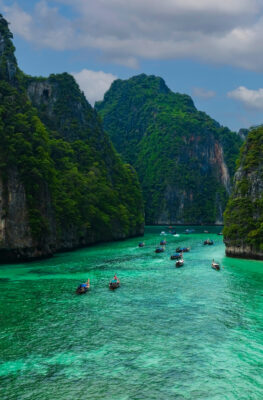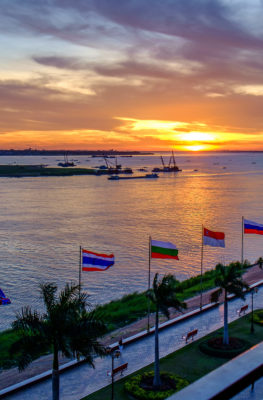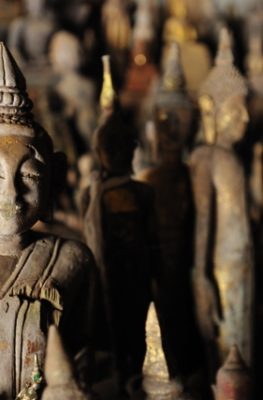Published on December 8, 2009
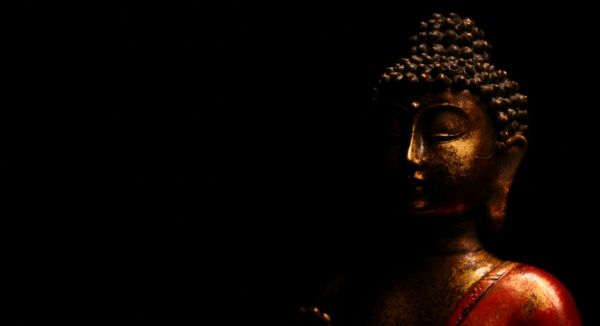
The kingdom of Thailand is a fiercely proud and independent nation. A geographic and commercial gateway to SE Asia, the country has long absorbed cultural flavouring from regional and international sources. Thai art, design and architecture has been colored by centuries of contact with China and India, and since the turn of the 20th century European art has played an important role in shaping modern Thai art.
In a more globally connected 21st century, Thai lifestyles are increasingly gravitating away from the agrarian toward the fast pace of urbanity. Aside from the regular international tourist influx, today’s youth oriented creative culture is shaped from a saturation of cheap Sino merchandising, “K-” (Korean) and “J-Pop” (Japanese), street styling from the US, and European haute couture.
Yet for a predominantly Buddhist nation, theologically aligned art has been the historic heart of Thailand’s artistic ideology. From the golden periods of Thai history when the temple abundant kingdoms of Sukhothai and Ayutthaya reigned supreme, to the rise of western style modernist art in the 20th century, Buddhist iconography has prevailed. Even today many vernacular Thais still consider local art to be styled in the mould of these two classic periods.
While the country’s younger generation of artists and curators look to distance themselves from the familiar Buddhist associations regularly labelled upon Thai art, it is undeniable that such a relationship continues to permeate. Since the 1970s and 80s, neo-traditional painters such as Thawan Duchanee, Chalermchai Kositpipat, and Panya Vijinthanasarn, have infused allegorical interpretations of Buddhist imagery with moralistic warnings against modern materialism.
Even the more contemporary concerned art installations of artists Kamin Lertchaipraset and the late Montien Boonma, delve into the decline of spiritual and environmental empathy by the modern populace. Boonma was considered a pioneer of Thai installation art, both in its international recognition, as well as initiating its acceptance as a popular art form within his own country. His aromatic installations of the 1990s were like an artistic form of meditation, encouraging us to take refuge from the pressures of modern living.
Presently it is Thai artists such as Araya Rasdjarmreansook, Navin Rawanchaikul, Surasi Kusolwong, and Sakarin Krue-on, whoutilise media, situational and process driven art while still employing constructs perceived as indicatively Asian, who receive the most prominent international exposure.
For Thailand’s first ever 2007 representation at Germany’s prestigious five-yearly international art expose Documenta, Sakarin Krue-on employed traditional farming methodology in a collaborative project to cultivate a tiered rice terrace in a park outside the exhibition. A year earlier, Surasi Kusolwong set up a variant of his Thai market project, One Pound Turbo Market (you’ll have a good time),at the Tate Modern’s Turbine Hall in London. An ironic reflection of consumerist behaviour, shopping carts were stacked with cheap mass-produced plastic goods that the public fervently purchased as takeaway art.
Thailand’s contemporary arts scene has expanded steadily in recent years with new galleries regularly appearing across the capital Bangkok. Aside from an obvious leaning towards domestic artists, exposure to regional art productivity has become more accessible with commercial galleries dedicated to Chinese, Vietnamese, and Japanese art.
The most significant landmark erected upon the Thai art landscape in recent years is the long anticipated 500million baht Bangkok Art and Culture Centre (BACC). Opened in 2008 with a mandate to make contemporary art more accessible to the general public, the parabolic towering structure has been dubbed Bangkok’s Guggenheim. An indicator to the necessity for better arts infrastructure, pinpointing gallery locations has been made easier with the publication of the free monthly art resource guide, Bangkok Art Map (BAM! www.bangkokartmap.com).
Beyond Bangkok, the northern provinces of Chiang Mai and Chiang Rai are considered more free-spirited, grass-roots alternatives to the more commercially driven capital, but other than the expansive Chiang Mai University Gallery there are few exhibition platforms. Inspired by a more centralised community-based environment, Kamin Lertchaiprasert and the internationally renowned conceptual artist Rirkrit Tiravanija have teamed up to initiate the Land Project – a fledgling, self-sufficient artistic commune in the countryside around Chiang Mai, with houses designed and sponsored by invited Thai and international artists.
Despite a gradual rise in the price for domestic artworks, at present contemporary Thai art is still considered to be under-valued. This is due in part to an under-stimulated local collecting base, as well as Thai art being insufficiently represented at regional art auctions to provide an accurate barometer. That said, the international profile of Thai artists continues to rise steadily, as does demands for adequate and capable domestic infrastructure to enable these creators the support system they require and deserve.
Bangkok based writer-artist Steven Pettifor is a Bangkok based critic and independent curator. He is the author of Flavours – Thai Contemporary Art



